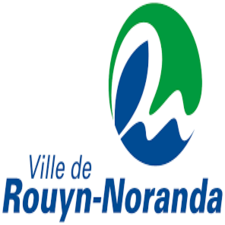Rivière
Type of resources
Topics
Keywords
Contact for the resource
Provided by
Formats
Representation types
Update frequencies
status
-

Linear hydrographic network of the City of Rouyn-Noranda. Drainage ditches are not included.**This third party metadata element was translated using an automated translation tool (Amazon Translate).**
-

Watercourses on the territory of the city of Lévis identified in the Regulation respecting land use planning and development plans (RV-2015-15-04)**This third party metadata element was translated using an automated translation tool (Amazon Translate).**
-

Surface hydrographic network of the City of Rouyn-Noranda**This third party metadata element was translated using an automated translation tool (Amazon Translate).**
-

COURDO SPÉCIAL program sampling points, watercourse quality, Aquatic environment monitoring network.**This third party metadata element was translated using an automated translation tool (Amazon Translate).**
-

COURDO program sampling points, stream quality, Aquatic environment monitoring network.**This third party metadata element was translated using an automated translation tool (Amazon Translate).**
-

Linear data representing the interpretation of accessible shores of public property (municipal or governmental) in the agglomeration of Montreal carried out using the land roll. This data is approximate and does not determine the actual shoreline within the meaning of the [Shoreline, Coastal and Floodplain Protection Policy] (https://www.environnement.gouv.qc.ca/eau/rives/index.htm). Accessibility can be by land and/or by water and there may or may not be development. The shores of inland waterways are not included, with the exception of the Lachine and Aqueduct canals. Although it has evolved, thanks to the expansion of shoreline parks, among others, this data was initially produced for the calculation of an indicator of the state of the environment in the first strategic sustainable development plan of the Montreal community.**This third party metadata element was translated using an automated translation tool (Amazon Translate).**
-

Hydrographic surfaces cut within the official boundaries of the Montreal Metropolitan Community, including the territory of the Kahnawake reserve and excluding the agglomeration of Montreal. This dataset is complementary to the data from the [hydrography of the Montreal agglomeration] (https://donnees.montreal.ca/dataset/hydrographie). They are made available for use in a basemap to put the agglomeration of Montreal into context.**This third party metadata element was translated using an automated translation tool (Amazon Translate).**
-

Geometric and conventional representation of the hydrographic network. The 3D hydrographic layer is represented by several natural or physical elements associated with the presence of water. These elements form part of the layers in the digital cartographic compilation.**This third party metadata element was translated using an automated translation tool (Amazon Translate).**
-

The purpose of this feature layer is to provide the 1997 overland flooding boundary in the Red River Valley. This dataset shows the extent of peak overland flooding in the Red River Valley in 1997 . Data is based on RADARSAT – 1 satellite imagery. During processing, the raw data set was resampled to 12.5 meter pixel resolution, then classified using PCI Geomatica software which is a specialized software designed to manipulate space born imagery. The final output depicting the flooding boundary is available as a TIFF or Shapefile. Launched in November 1995, RADARSAT-1 was a Canadian-led project which provided useful information to both commercial and scientific users in such fields as disaster management, agriculture, cartography, hydrology, forestry, oceanography, ice studies and coastal monitoring. Equipped with a powerful synthetic aperture radar (SAR) instrument, it acquired images of the Earth day or night, in all weather and through cloud cover, smoke and haze. As of March 2013, the satellite was declared non-operational and is no longer collecting data. Many applications were developed to take advantage of RADARSAT-1 capacity for detecting the presence of water. These included monitoring flooding and the build-up of river ice, and mapping the melting of snow-covered areas. When used for flood monitoring, RADARSAT-1 data helped assess the impact of flooding, predicted the extent and duration of floodwaters, analyzed the environmental impact of water diversion projects, and developed flood mitigation measures. Fields Included:FID : Internal feature numberNAME : Flooded area nameAREA_SQKM : Size of flooded area
-

The purpose of this feature layer is to provide the 2011 overland flooding boundary in the Red River Valley. This dataset shows the extent of peak overland flooding in the Red River Valley in 2011. Data is based on RADARSAT – 1 satellite imagery. During processing, the raw data set was resampled to 12.5 meter pixel resolution, then classified using PCI Geomatica software which is a specialized software designed to manipulate space born imagery. The final output depicting the flooding boundary is available as a TIFF or Shapefile. Launched in November 1995, RADARSAT-1 was a Canadian-led project which provided useful information to both commercial and scientific users in such fields as disaster management, agriculture, cartography, hydrology, forestry, oceanography, ice studies and coastal monitoring. Equipped with a powerful synthetic aperture radar (SAR) instrument, it acquired images of the Earth day or night, in all weather and through cloud cover, smoke and haze. As of March 2013, the satellite was declared non-operational and is no longer collecting data. Many applications were developed to take advantage of RADARSAT-1 capacity for detecting the presence of water. These included monitoring flooding and the build-up of river ice, and mapping the melting of snow-covered areas. When used for flood monitoring, RADARSAT-1 data helped assess the impact of flooding, predicted the extent and duration of floodwaters, analyzed the environmental impact of water diversion projects, and developed flood mitigation measures. Fields Included:FID : Internal feature numberNAME : Flooded area nameAREA_SQKM : Size of flooded area
 Arctic SDI catalogue
Arctic SDI catalogue